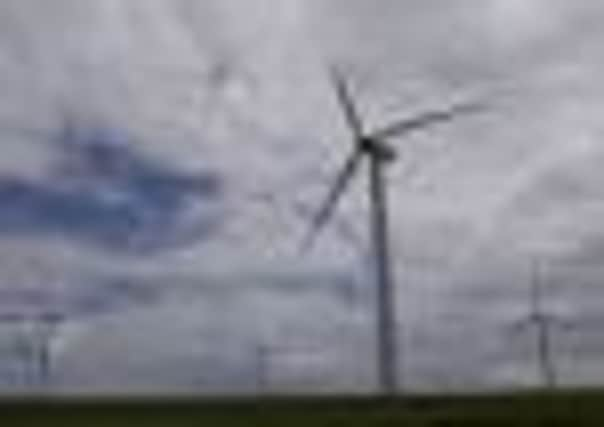Scotland’s renewable energy at all-time high


• Scotland “firmly on course” for 100% of electricity demand from renewables by 2020.
• More than a third of entire UK’s renewables output from Scotland.
Advertisement
Hide AdAdvertisement
Hide AdEvery home in Scotland could have been powered from the 14,600 gigawatts (GW) of electricity which came from renewables including hydro, wave and tidal power, figures show.
The SNP government is determined to create a green energy revolution in Scotland, with Alex Salmond saying the country’s vast wind levels could see the country become the “Saudi Arabia of renewables”.
Renewable sources produced 14,645 gigawatt hours (GWh) of electricity last year, up almost 7 per cent on 2011 and enough to power every home in Scotland.
The SNP has pledged to generate the equivalent of 100 per cent of Scotland’s electricity demand from renewables by 2020. It has now reached 39 per cent, yesterday’s figures show, and energy minister Fergus Ewing said the country was “firmly on course” to meet the target.
Mr Ewing said: “2012 was another record year for renewables in Scotland. Scotland also contributed more than a third of the entire UK’s renewables output, demonstrating just how important a role our renewable resource is playing in terms of helping the UK meet its binding EU renewable energy targets.
“We remain firmly on course to generate the equivalent of 100 per cent of Scotland’s electricity needs from renewables by 2020, with renewables generating more than enough electricity to supply every Scottish home.”
The figures, from the UK Department of Energy and Climate Change, show that wind power generated a record 8,296 GWh last year, up 19 per cent on 2011 and more than four times the amount generated by wind in 2006.
By the end of 2012, the potential full capacity of renewables was up 22 per cent over the course of the year to 5,883 megawatts.
Advertisement
Hide AdAdvertisement
Hide AdThe average electricity consumption in Scotland in 2010 was 4,824 kWh, enough to power 2.67 million households for a year, with about 2.37 million homes in the country.
However, there are fears that energy bills could soar even further with the reliance on wind turbines. Last year’s energy bill allowed firms to double or even triple the amount of money they add to customers’ bills to pay for renewable power, nuclear and other environmental measures.
But the UK government insisted that analysis published yesterday shows households will pay £166 less for their gas and electricity by 2020 than they would if there were no such policies.
This is because the benefits of energy-saving measures and less reliance on expensive fossil fuel power mean bills are actually lower than they would be without the green policies.
Environmental campaigners were among those who welcomed the new figures.
Lang Banks, director of WWF Scotland, said: “It is fantastic news that Scotland is well on track to meeting its target of generating 100 per cent of electricity from renewables by 2020.
“By combining Scotland’s superb renewable energy resource with greater energy efficiency and investment in the grid, we can reduce our reliance on fossil fuels.”
Joss Blamire, senior policy manager at Scottish Renewables, said: “It’s been another recordbreaking year for the renewable energy industry in Scotland, with more of our electricity being produced by renewable energy sources than ever before. And we’ve doubled the investment being driven into the Scottish economy in just one year.
“We are on track to be Scotland’s main source of electricity by the end of this year.”